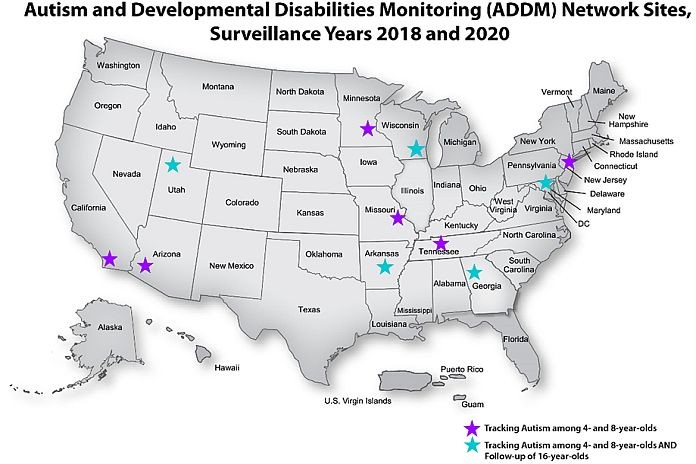ATLANTA, USA, (CDC) – One in 44 (2.3%) 8-year-old children have been identified with autism spectrum disorder according to an analysis of 2018 data published today in CDC’s Morbidity and Mortality Weekly Report (MMWR) Surveillance Summaries. This is higher than the previous estimate published in March 2020, which found a prevalence of 1 in 54 (1.9%) 8-year-old children. The 2018 data come from 11 communities in the Autism and Developmental Disabilities Monitoring (ADDM) network.
A second report on children born in 2014 (4-year-old children) in the same 11 communities shows progress in the early identification of children with autism. These children were 50 percent more likely to receive an autism diagnosis or special education classification by 48 months of age compared to children born in 2010 (8-year-olds).
“The substantial progress in early identification is good news because the earlier that children are identified with autism, the sooner they can be connected to services and support,” said Karen Remley, M.D., director of CDC’s National Center on Birth Defects and Developmental Disabilities. “Accessing these services at younger ages can help children do better in school and have a better quality of life.”
Racial and ethnic differences persist
In several of the eleven communities in the ADDM Network, fewer Hispanic children were identified with autism than Black or White children. In addition, a higher percent of Black children with autism were identified with intellectual disability compared to White or Hispanic children with autism. These differences could relate in part to access to services that diagnose and support children with autism. Understanding the prevalence and characteristics of children with autism can help communities work towards identifying all children with autism early and enrolling them in services.
Community differences in autism prevalence
Autism prevalence in the 11 ADDM communities ranged from 1 in 60 (1.7%) children in Missouri to 1 in 26 (3.9%) children in California. These variations could be due to how communities are identifying children with autism. Some communities have more services for children with autism and their families.
ADDM
CDC’s ADDM network is a tracking system that provides estimates of the prevalence and characteristics of autism among 8-year-old and 4-year-old children in 11 communities in Arizona, Arkansas, California, Georgia, Maryland, Minnesota, Missouri, New Jersey, Tennessee, Utah, and Wisconsin.
ADDM is not a representative sample of the United States. Previously, the ADDM reports were published every other year in the spring. However, in 2018, CDC updated and simplified the ADDM methodologyexternal icon and data system to directly reflect community identification of autism by healthcare provider diagnosis or special education eligibility. These changes provide similar prevalence estimates as the previous method and allow for faster publication of results.
Tools for parents, healthcare providers, early childhood educators and caregivers
CDC’s “Learn the Signs. Act Early” program provides free resources in English, Spanish, and other languages, to monitor children’s development starting at two months of age. CDC’s Milestone Tracker Mobile app can help parents and caregivers track their child’s development and share the information with their healthcare providers.






